Review: Sony Ericsson Xperia X10
Aug 24, 2010, 3:33 PM by Eric M. Zeman
Sony Ericsson brings its first Android handset to AT&T with the Xperia X10. While it shines in some places, the X10 is quite dull in others. Find out where it excels and where it falls flat.
Form
Is It Your Type?
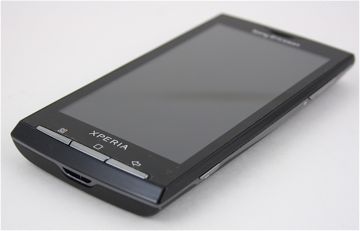
AT&T has added the Xperia X10 to its slowly growing arsenal of Android phones. The X10, made by Sony Ericsson and first announced in October 2009, doesn't break any new ground in terms of physical design. It does, however, go further than many other Android handsets when it comes to Sony Ericsson's unique user interface software. The software definitely makes the X10 stand out in AT&T's cluster of Android smartphones. Is that alone enough to make it a contender?
Body
Slab-style Android phones are becoming increasingly difficult to tell apart. There's not much designers can do with the limitations introduced by the large screen size and required set of buttons. That's not to say they can't have at least a little personality. The X10 feels great in the hand mainly because of the rounded side edges of the device. The soft-touch paint job helps, too. The combination of these two creates a handset that feels comfortable to use and pleasant as it rests against your skin; there are no sharp angles jabbing you. The weight is also just right. It's hefty enough to give it a feeling of quality without being too heavy.
There are just three physical buttons on the front of the X10: Menu, Home and Back. Why Sony Ericsson decided to leave off the search key is a puzzler. I like that key and use it all the time on other Android handsets. The three keys are way down at the bottom of the X10, but are easily found. They are dashes lined in a row, and covered with a slippery, silvery finish. Travel and feedback was a little bit on the mushy side, but you can at least tell that you've pressed the buttons.
There are no buttons or controls on the left side of the phone nor the bottom. The top of the X10 hosts several controls, including the power/lock button, microUSB port, and 3.5mm headset jack for use with most stereo headphones. I like that the headset jack is on the top, which makes it easier to listen to music with the phone in your pocket. The hatch covering the microUSB can be tricky to remove if you clip your nails short as I do. Given how often you'll be using the power/lock key, I am glad that Sony Ericsson made the button easy to find and satisfying to use. It has good travel and feedback.
The volume toggle and dedicated camera button are both found on the right side of the phone. The volume toggle is situated closer to the top of the X10, right where your thumb expects to find it. It is a sharp-edged toggle that has very good travel and feedback. One thing you might notice: positioned directly under the volume toggle is the magnifying glass normally associated with the search key. The only problem is that there appears to be no way to use the volume toggle as the replacement search key. Try as I might, I couldn't get it to work. Odd.
Closer to the bottom edge is where the two-stage camera button rests. The X10 has perhaps the best camera button I've used on a phone. Both stages are clearly defined and require deliberate pressure to use. You won't be firing off any accidental shots with the X10. You have to want to take a picture. I like that.
The microSD port is located under the battery cover and abuts the battery. The microSD card cannot be removed without first removing that battery. That's a pain in the neck. Then, the X10 is comes packed with a meager 2GB microSD card. Why so stingy, AT&T? AT&T is packing 16GB cards with other phones, which makes the 2GB card with the X10 all the more insulting.
The Three S's
Screen
The X10 has a four-inch display that packs in 854 x 480 pixels. That puts it right smack in the middle of the battle between devices such as the EVO 4G, Vibrant, and Droid X. Pixel density is good and most anything you look at on the screen will appear free of rough pixel edges. I did have some trouble with the auto-brightness function. Out of the box, the X10's settings have the auto-brightness function on. No matter where I took the X10, the screen remained far too dim. For example, I used it next to a window during daylight and had trouble seeing anything on the display. When I moved further into the a dark corner in the room, the display didn't adjust, and it was still too dim to really see. I gave up and turned the automatic adjustments off. When set to full brightness, the X10's display dazzles. Outside, in full sunlight, it is less readable, but you can control that to some degree by altering the background wallpaper color.
Signal
The X10 easily found AT&T's 3G network. Most of the time it maintained about three bars. In side-by-side tests with other AT&T devices, it generally reflected the same number of bars as the other device. As far as real-world performance is concerned, the X10 didn't drop any calls during my tests. I did miss a few text messages — or at least they weren't delivered immediately. There was about a 15-minute lapse between when text messages were sent and then received with the X10 on several occasions. Data speeds were consistently in the 1.4Mbps range, which is average Not blazing fast, but not slow-pokey, either.
Sound
The X10's ringer is loud enough, I suppose, though it falls short of the obnoxiously loud, eardrum-rupturing volume that I prefer. You'll be able to hear it just fine if it's in the same room with you. If it is in a different room and you have a noisy house, you might miss a call. The same goes for in the car. Ditto for the SMS and other alerts. As far as the earpiece goes, the volume was fine. It was easy to hear conversations, even in moderately noisy places. Noise and interference during calls were rare, and not conversation-halting in nature. There was a slight muffled sound to conversations, but otherwise they were good. Those with whom I spoke reported no troubles on their end. As for the speakerphone, the call quality issues persisted, but volume was sufficient for most home or small office settings.
Battery
Battery life for the X10 was on par with other handsets of this nature. It easily lasted from 7AM to 11PM, with plenty of juice left over to get to lunch the next day. Keeping it synced to multiple email, Facebook and Twitter accounts didn't appear to phase the battery much. Using Wi-Fi did put a small dent in battery life, as did use of the Bluetooth radio. Even with Wi-Fi turned on, the X10 made it through a whole day. If you're going away for the weekend, however, I'd pack a charger.
Touch
The Xperia X10's display is a capacitive screen. It was not as responsive nor as accurate as I would have liked. About 20% of my presses or swipes weren't registered correctly by the device. I had to re-press often enough that it became annoying. It may be better than resistive panels, but I'd rank it close to the bottom as far as capacitive touch screens go.
Basics
Menus
The X10 ships with Android 1.6 Donut and some heavy customization from Sony Ericsson. As far as I am concerned, shipping this phone with Android 1.6 is a real disservice to customers. Sony Ericsson wasn't adequately able to explain why it is stuck with 1.6 when 2.2 is already available. Sony Ericsson said that the X10 is "upgradable" but not necessarily that it will be upgraded. It's going to be a hard sell for Sony Ericsson, when devices such as the Samsung Captivate — which runs Android 2.1 and will be updated to 2.2 soon — are sitting right next to the X10 on the store shelf.
In order to make up for this, Sony Ericsson has gone overboard with customized software. Sony Ericsson hasn't named its Android skin, but it focuses on two portals called TimeScape and MediaScape.
TimeScape is an application that collects all your communications — email, SMS, MMS, Twitter DMs, Facebook updates, call logs — and streams it all in what Sony Ericsson calls "Splines." The best way I can define Splines is to say that they are vertical — rather than horizontal — carousels that resemble a human spine. Your content sits on cards and is displayed in a 3D backbone that stretches beyond the top and bottom edges of the screen. You can scroll through the Splines to access content, and also swipe sideways to parse the content. For example, when you swipe the TimeScape Spline sideways, it filters the messages to show only emails, only SMS, only Twitter updates, etc.
Each card represents an individual message. Tap it once, and it will jump out of the Spline and show the first few lines of the message. Tap it again to go to the application associated with that message. There's a lot of animation and visual effects to opening and interacting with the Splines and cards/tiles. It takes some getting used to, but it is one of the fancier and more interactive skins I've seen on an Android handset. There is a definite learning curve to using TimeScape and MediaScape, but they are inventive and beat the pants off other skins such as Motoblur.
Once you move beyond the Splines, things appear more familiar. The main menu works the same as on any other Android handset. The application drawer is pulled up from the bottom. It's too bad it is stuffed with a lot of lame AT&T bloatware. The notification shade drops down from the top of the X10 as you expect. There are only three home screens, however, for users to populate with widgets, shortcuts and apps.
One thing I will thank Sony Ericsson for is adding some color to the settings menus. Rather than white text on a black background, Sony has given the menus a really nice blue background that makes a world of difference. It's silly that a simple background color would make the settings menu more enjoyable to work with, but it's the truth.
As for speed, the X10 runs fairly well. I remember the first time I tested it in October 2009, it was horribly slow. Sony Ericsson has done its best to optimize the MediaScape and TimeScape software for Android 1.6 and give it the best performance possible. Despite all the heavy animations and 3D effects, it runs with few hiccups and doesn't ever seem to get bogged down.
Calls/Contacts
Calls
There are several avenues to making calls with the X10. Since there are no physical Send/End keys, you have to rely wholly on the software. One of the four icons at the bottom of the main home screen is for the phone. Press it and you have a slightly redesigned Android dialer. Sony Ericsson has moved the four tabs that normally appear across the top — Dialer, Call Log, Contacts, Favorites — to the bottom of the screen. Otherwise the phone app functions much like it does with other Android handsets.
In the call log, for example, there is a green phone symbol to the left of each call. Press that to make a call. There's also an arrow (red or green for placed or missed calls) to the right of each call log. Press that to go to an informational page about the call entry. Press and hold over the actual number and the full set of options pops up, allowing you to call the number, send an SMS, add it to contacts, etc.
Call records also appear in the TimeScape Spline. They are filtered among and between all your other messages. If you happen to be interacting with TimeScape, you have access to all your logs there, and can get all the same information.
Contacts
The main contact application is nearly identical to every other Android handset. The X10 syncs with your email accounts and automatically populates your contact database with a user's Google account. Perhaps the one notable difference is that Sony Ericsson has added a touch of TimeScape to the way information is displayed on each contact card. The first page presents the contact's basic information, and you can swipe sideways to see recent messages, recent photos (if synced with Facebook), and other information. It's visually appealing, but it was a little slow to interact with.
Otherwise, all the same tricks and functions are present.
Messaging
Messaging is one feature that the X10 knocks out of the park. It covers all the bases, and the visually appealing nature of TimeScape make all the apps fun to interact with.
First up is email. There are three email apps on the X10. One is the standard Android Gmail application. Sony Ericsson hasn't made any noticeable changes to it, and it works fine. There is a second, similar email app reserved for POP3/IMAP4 accounts. It is bare bones, but does a fine job. The real killer is the Work Email application. This is a $40 application (loaded onto the X10 for free) that makes up for a lot of the X10's deficiencies when it comes to Android 1.6. Many of the benefits of Android 2.2, for example, are aimed at business users, with support for Exchange features and security controls. This Work Email application includes all of those and more. It can be used with Gmail or business Exchange accounts. It syncs email, calendar and contact information, and is robust enough to allow for advanced scheduling tasks. With three email options, most users will feel taken care of.
The SMS/MMS application is solid, and offers threaded, conversational messaging. Images show up within message threads and are opened easily. Were it not for the slight delay in receiving SMS messages from time-to-time, this would be a really good messaging application.
On the IM front, the X10 has Google Talk and a separate client for AIM, Windows Live Messenger and Yahoo Messenger. Both of these apps are available on other Android handsets and don't do anything to really stand out from the crowd. They are, however, functional, and work well at managing conversations.
Twitter and Facebook are included in TimeScape, too. They are included in the all-encompassing stream of communications, but can also be used separately.
What really gives this all some much-needed pizazz is TimeScape. By having a real-time flow of all your messages available at any time, you can really get a sense of the ebb and tide of your communications. All of these messaging applications can be accessed individually through the main menu, but are contained in the TimeScape wrapper. With so many options and the visual flair of TimeScape, Sony Ericsson has redefined how Android can be skinned creatively without going overboard and taking over the entire OS.
Extras
Music
The second major application available to the X10 is MediaScape. Take everything I said about TimeScape and apply that to your music, photos, and videos. The three apps are interconnected via MediaScape, though they are also available individually from the main menu.
The base MediaScape menu defaults to the music player. It offers a visual glimpse of what albums or tracks have been played recently, added recently, played the most and so on. Users can also sort via album, artist, song, etc. The player itself is one of the most visually appealing I have seen on an Android handset. It doesn't go out of the way to offer more features, but it looks great, and does really nice things with album art, such as using it as a temporary wallpaper during playback.
The player offers the usual playback controls, plus shuffle, loop and a shortcut that allows users to send the song via email. There's also the "infinity" button above the album art. Press it, and you're taken to a new interface that lets you conduct web searches for the artist, go to YouTube to see that artists videos, etc.
Given how much attention Sony Ericsson paid to the user interface of the player, I am still disappointed that it didn't add an equalizer or any other way to adjust the sound of playback. After all, this is Sony Ericsson we're talking about. Its Walkman handsets easily outstrip the X10 in terms of overall features. Why leave out so many features?
Camera
The X10 has an 8.1 megapixel camera with an LED flash. To open it, the camera button needs to be pressed and held for about one second. Sony Ericsson forgoes the stock Android shooter for its own software, and that's something for which I was grateful.
The finer controls are all placed on the left side of the display. The first allows users to adjust the capturing mode: Normal, Scene Recognition, Smile Detection, or Touch Capture. What I like about these menus is that rather than non-finger-friendly lists of text, the options are all placed on huge buttons. This makes selecting between the different modes much easier.
As far as resolution goes, the 8.1 megapixel setting takes photos in a 4:3 aspect ratio. The camera can be dialed down to 6 megapixels with 16:9 aspect ratio, or 2 megapixels with both 4:3 and 16:9.
There are nine shooting scenes to choose from: Normal, Portrait, Landscape, Night Scene, Night Portrait, Beach and Snow, Sports, Party and Document. Selecting any of these changes the way the camera uses the ambient light and flash to get the best shot. They are all pretty much self explanatory. The odd-man-out in the bunch is Document. The Document setting assumes you're going to be taking a picture of something white in an inside environment at close range.
The X10 lets users alter focus settings, as well. Choices range from single autofocus, to macro, face detection and infinity.
The main shooting page lets users easily switch between the camera and video camera, and there's a neat "roll" of miniature thumbnails of the last five shots stretching across the bottom of the viewfinder.
The X10 focuses quickly, and lets you get right back to shooting when done. It can save images to the microSD card in the background while you're focusing on the next shot. That speeds up the process.
The video camera offers nearly all of the same controls and functions that the camera does. Disappointingly, the resolution options are limited to WVGA, VGA, QVGA and MMS-optimized. There's no 720p HD video capture here.
Gallery
The gallery is boring. It offers only a grid for the main view. The stock Android gallery is far more interactive. Tap a photo, and the X10 actually uses the same interface as the media player to showcase images. Press Play, and it automatically starts a slide show.
As far as options go, images can be easily attached to emails or MMS messages and set as contact profile images. Editing is limited to cropping and rotating. Really, Sony Ericsson? On your flagship multimedia Android device, all you offer is crop and rotate? That's weak sauce, big time.
The gallery application offers an infinity button, too. Pressing it only brings up a different way to sort through photo albums, based on date, location, etc. Sorting by date lets you quickly find the pictures shot on Day X (such as some one's birthday) and location sorting is great for mapping out vacation shots.
Photos/Video
Photos
The X10's 8.1 megapixel camera delivers razor-sharp images that have great white balance and color. I haven't seen pictures turn out with such clarity from a camera phone in some time. I was truly impressed with the quality of the X10's camera. I saw very little noise or pixelation, and exposure was correct almost all the time. In challenging environments, such as rooms flooded with sunlight, the X10 did an admirable job at balancing out the bright and dark spots. White balance control is critical, and the X10 did a superb job of delivering. You'll easily want to share images captured with the X10 via every means available.
Video
The X10 shoots video with a maximum resolution of WVGA. While the videos look good all around, I can't help but express disappointment with the lack of 720p video capture. Still, the videos I shot were clear, in focus, with almost no noise or grain of any kind. Colors and white balance were spot on, and the X10 handled drastic changes in lighting with ease. You will easily want to share videos captured with the X10 on YouTube and perhaps even on your big screen TV.
(video no longer available)
Browse/Customize
Browser
The X10 comes with the stock Android browser. It is a fine browser that does a good job of rendering HTML web sites. Sony Ericsson has made no obvious modifications to it, and it worked well during my testing. Web sites loaded in an instant via Wi-Fi, and only took a little bit longer via 3G. Phone Scoop popped up in almost no time at all.
The browser supports multiple open tabs, has a nice visual bookmarking system, and offers advanced controls if you care to dig into the settings menu. With Android 1.6, there's no hope of viewing Flash content on web sites. The X10 doesn't even have Flash Lite on board.
Customize
The X10 allows users to customize the handset about as much as any other Android device. Wallpapers, ringtones, alerts and the like are all easily altered. There are a handful of different themes from which to choose, and the color of the main settings menu can be changed, too.
With three home screens, users will need to be efficient in their widget, shortcut and app selections for the main panels.
Extras
AT&T Bloatware
The X10 is stuffed with a lot of junk from AT&T. AT&T-branded apps include: AT&T FamilyMaps, AT&T Hotspots, AT&T Maps, AT&T Navigator, AT&T Radio, Mobile Banking and MobiTV. Guess what? You can't remove any of it. You also can't install off-Market (non-Google approved) apps. AT&T has taken this approach to all of its Android devices so far, and I don't like it. Otherwise, you have access to the Android Market and all the apps there. Since the X10 is stuck on Android 1.6, there are plenty of apps that will be incompatible with the X10. Many of the best, newer applications require devices running Android 2.0 and up.
Bluetooth
The X10 supports a basic set of Bluetooth profiles, including mono and stereo headsets and object push for sharing photos. I had no trouble pairing the X10 with mono headsets, stereo speakers, and PCs. Phone calls via mono headsets were choppy at best. I'd reserve Bluetooth use for situations that absolutely require you to be hands-free. Music sounded decent through stereo Bluetooth speakers, but not as great as I was expecting. Sending photos between PCs and other phones was no problem at all.
Clock
Android phones have tons of options when it comes to clocks. For simple time checks, the X10 will easily negate the need for a wristwatch. A quick press of the Power/Lock button shows the time in a large digital display on the screen. Be careful choosing which wallpaper you use, however. The text is white. If the wallpaper has white in it — such as clouds — it could obscure the clock. The time is also always available in the status bar at the top of the display.
GPS
The X10 has AT&T Maps, AT&T FamilyMaps, AT&T Navigator and Google Maps on board. Needless to say, there are a lot of choices for mapping and navigation functions if you have the need. Thankfully free navigation is available to the X10 through Google Maps, so if you want to avoid the $10 AT&T navigation penalty you can. AT&T's software, which does a fine job of routing users from Point A to Point B, costs extra per month and doesn't offer any discernible benefits when compared to Google Maps.
Video
Wrap-Up
The Sony Ericsson Xperia X10 is an interesting monster. It's ahead of the curve in some areas, while it lags badly in others. I have no complaints with the hardware. It's hardly the sexiest Android device ever made, but it's far from the worst. The large screen size and good display make for a compelling Android experience, no doubt.
Rather than make the hardware unique, Sony Ericsson has taken pains to develop a new Android skin that merges contact and media functions. TimeScape and MediaScape are at once elegant, feature-rich, and potentially over-powering. While the option always exists to check individual accounts, TimeScape lumps them all together in a way that is more visually appealing and fun to use than any other Android skin that I've encountered so far.
The media capabilities of the X10 are boggling. While the visual flair and appearance is highly customized and good to use, Sony Ericsson fell short when it comes to new features. In the music department, the media player lacks any advanced features — hell, the X10 doesn't even have a music store on board. The camera is fantastic, and the controls are nearly limitless when it comes to fine-tuning settings. it focuses well, behaves quickly, and is more finger-friendly than many other mobile cameras out there. But the gallery offers only the most basic of features and is boring to work with.
The X10 offers only average performance when it comes to call quality, battery life, and other basics. The real appeal of this device, then, is the software being offered by Sony Ericsson. I would recommend anyone interested in this phone go to an AT&T store and play with TimeScape and MediaScape. They are vitally important aspects of how users interact with the X10.
The biggest failing of the X10 is perhaps the Android 1.6 software and the serious competition coming from Samsung's Android 2.1-toting Captivate. Between the two, the choice is tough, and boils down to software.

Comments
Update?
Packaging?
(continues)
Email accounts
Too Late
what?? no comparisons to the iPhone???
you already know you can't win with some of us! 🤤
have a good day!
Xperia X10 Video
https://www.phonescoop.com/articles/article.php?a=40 ... »
Enjoy!
Eric M. Zeman said:
All - We shot an extensive look at the Xperia X10 on video months ago. I added it to the review to refresh your memory.
https://www.phonescoop.com/articles/article.php?a=40 ... »
Enjoy!
T...
(continues)
bluecoyote said:
How come no video?
Yes! We need video!
I had a chance to play with the X10 at a local Sony Store--it's the best looking/feeling piece of hardware I've ever laid eyes on.
FCC´s fault
Still, great phone! and greater with Android 2.2, next month!!!


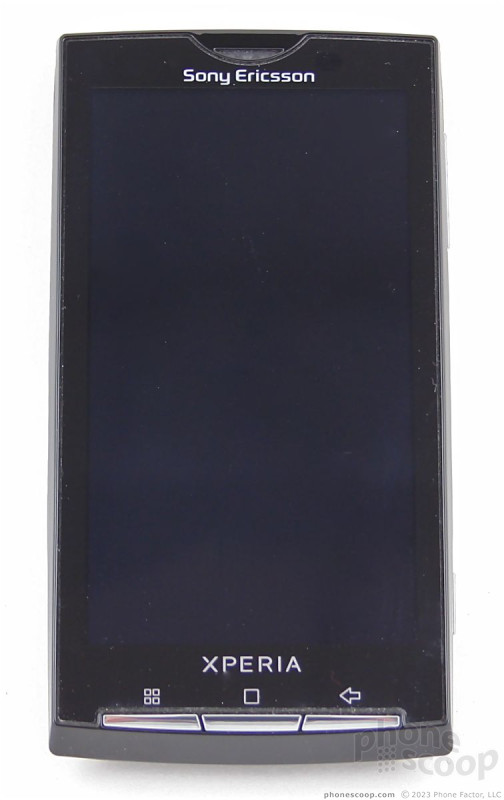








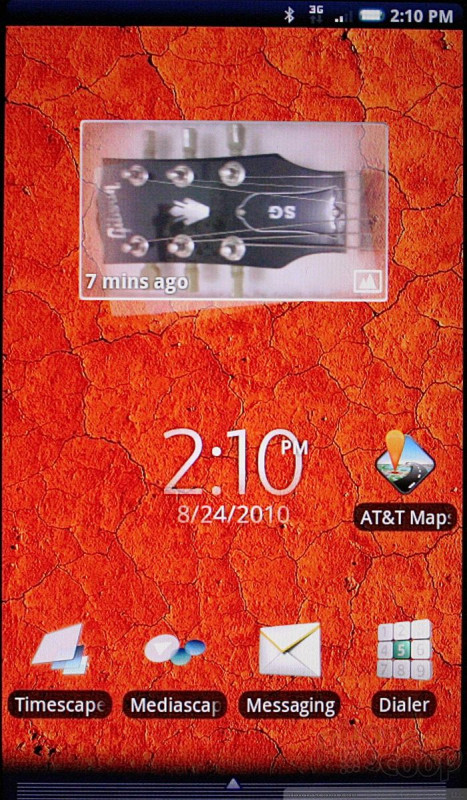









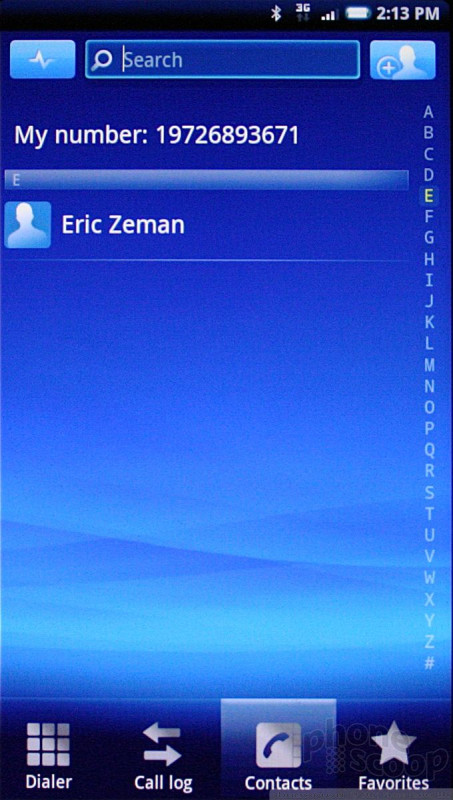


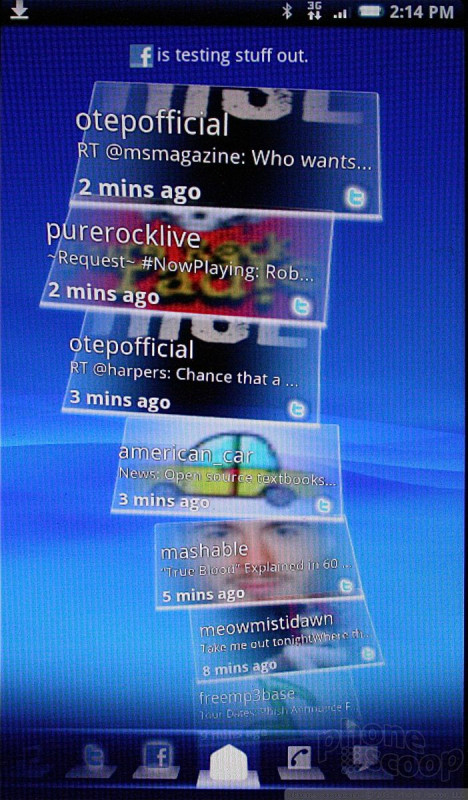












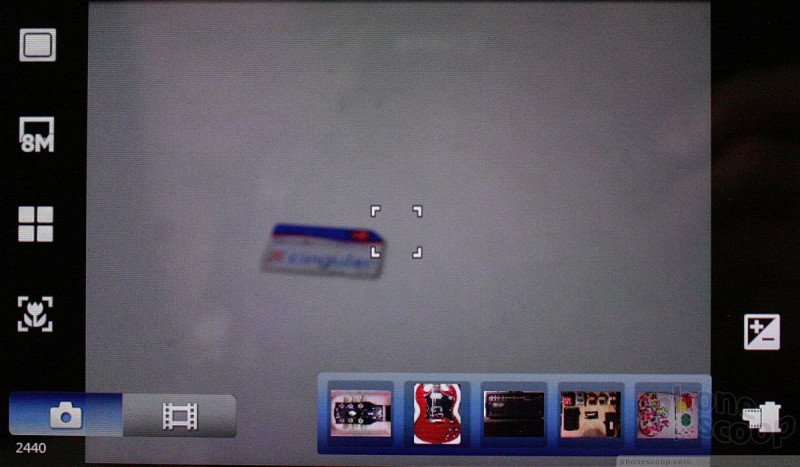










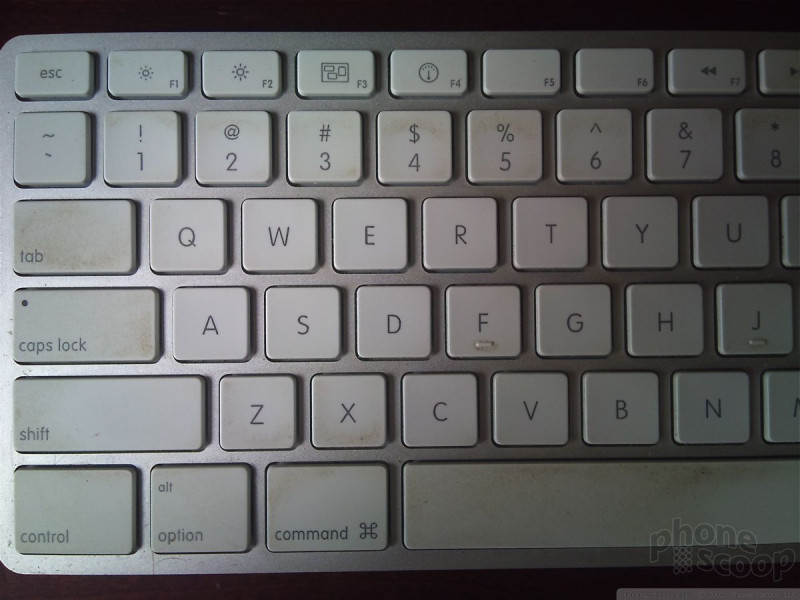















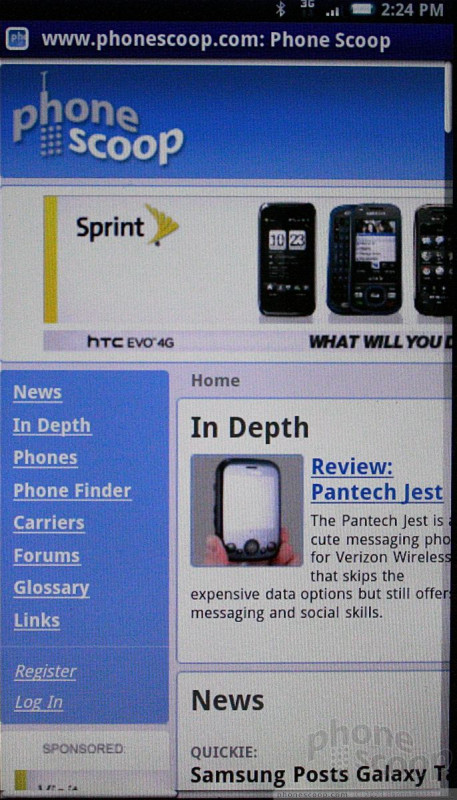




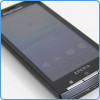 Video Tour: Sony Ericsson Xperia X10
Video Tour: Sony Ericsson Xperia X10
 Samsung S24 Series Adds More AI, Updates the Hardware
Samsung S24 Series Adds More AI, Updates the Hardware
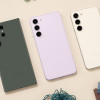 Samsung Puts its Best Camera Yet in the Galaxy S23 Ultra
Samsung Puts its Best Camera Yet in the Galaxy S23 Ultra
 Sony Ericsson Xperia X10
Sony Ericsson Xperia X10








